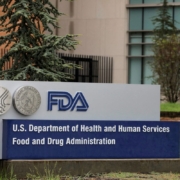Sanofi sues Sarepta over Elevidys DMD gene therapy, alleges patent infringement
Sanofi sues Sarepta over Elevidys DMD gene therapy, alleges patent infringement
Sanofi’s subsidiary Genzyme is suing Sarepta Therapeutics, alleging that by producing and marketing the Duchenne muscular dystrophy gene therapy Elevidys (delandistrogene moxeparvovec-rokl), the biotech is infringing on the pharma’s protected technologies.
Sanofi’s lawsuit claims that Elevidys violates two of its patents—dubbed the 542 and 721 patents—which are related to the composition and production of adeno-associated virus (AAV) vectors, which are used to package the actual therapeutic gene construct for delivery into the body. Both are set to expire on June 1, 2025.
The patents pertain to specific methods of preparing “high ionic strength compositions” in which AAV vectors “do not significantly aggregate” when stored, according to the lawsuit. Elevidys, Sanofi alleges, is contained in a solution that makes use of this patent-protected formulation, allowing the gene therapy to be kept without clumping, which would otherwise compromise its final quality and use.
Sanofi is seeking a trial by jury and damages “adequate to compensate” the pharma for the alleged infringement. If it succeeds, Sanofi could also win “increased damages” of up to three times the amount assessed, along with pre-judgement and post-judgement interests and costs.
The lawsuit follows a Delaware judge’s decision in January 2024 ruling in favor of the biotech in a separate patent row with Regenxbio and the University of Pennsylvania. According to Reuters, U.S. District Judge Richard Andrews dismissed the challenge to Sarepta’s Elevidys, finding no evidence that the gene therapy violated the plaintiffs’ protected technologies.
By delivering a functioning copy of the dystrophin gene, Elevidys addresses the underlying cause of Duchenne muscular dystrophy (DMD), helping restore function and strength to muscles that would otherwise have been ravaged by the disease.







 Reuters
Reuters BioSpace
BioSpace

